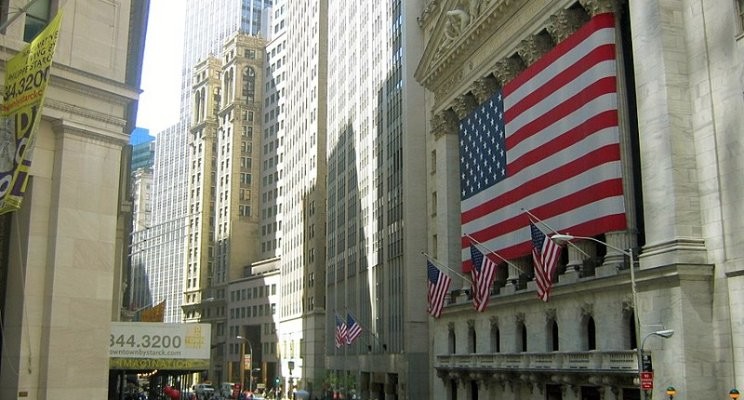
(Photo : LinkedIn)
US markets
- The U.S. stock market saw a slight downturn due to a decline in technology stocks and anticipation of the Federal Reserve's next move.
- Despite the in-line inflation reading, traders anticipate a 66% chance of the Fed lowering borrowing costs by 25 basis points in December.
- The Dow Jones Industrial Average and the Russell 2000 index saw gains, buoyed by healthcare and financial sectors.
- The technology sector took a hit, with major companies like Nvidia and Microsoft experiencing losses.
The U.S. stock market experienced a slight downturn on Wednesday, with the S&P 500 and the Nasdaq both experiencing minor losses. This was largely due to a decline in technology stocks, as investors turned their attention to the Federal Reserve's next move following an in-line inflation reading. The Personal Consumption Expenditure index, the Fed's preferred inflation gauge, rose 2.3% in October on an annual basis, according to a Commerce Department report. This was in line with economists' estimates but remained above the central bank's 2% target.
Despite this, traders still anticipate a 66% chance that the Fed will lower borrowing costs by 25 basis points at its December meeting, according to CME's FedWatch. This expectation is also reflected in the Gulf region, where most stock markets ended lower on Wednesday as investors awaited key inflation data from the world's biggest economy for cues on the likely scale of a Federal Reserve rate cut next month.
Traders are now betting on a 62.8% probability that the central bank will lower borrowing costs by 25 basis points in December, according to CME Group's FedWatch Tool.
The Dow Jones Industrial Average, however, rose 105.77 points, or 0.23%, to 44,964.85. The Russell 2000 index was up 0.7%, while the blue-chip Dow was buoyed by gains in healthcare and financial stocks. This comes after data earlier in the day showed the economy grew at a solid clip in the third quarter, while weekly jobless claims fell again last week, keeping the door open to another interest-rate cut from the Federal Reserve in December.
Impact on the Technology Sector
However, the technology sector took a hit, with most megacaps falling. Nvidia was down 2.5%, while Microsoft lost 0.6%. Losses in these stocks brought the Information Technology sector down 1.1%, as yields on shorter-dated Treasury bonds recouped some losses after the PCE data. Dell and HP, which fell 10.5% and 10.1%, respectively, after downbeat quarterly forecasts, added to declines and were the top losers on the benchmark index.
The benchmark S&P 500 is on track for its biggest one-month rise in a year and its sixth month of gains out of seven, as markets price in the probability of Trump's policies benefiting local businesses and the overall economy. However, concerns include U.S. President-elect Donald Trump's proposed tax cuts and tariff policies, including his latest stance on imports from Mexico, Canada, and China, which could push up prices, spark a trade war, and weigh on growth globally.
Minutes from the Fed's November meeting, released on Tuesday, showed policymakers were uncertain about the outlook for interest-rate cuts and how much the current rates were restricting the economy. "Inflation has proven to be a little stickier than the Fed would have liked, which may give them pause with respect to cutting rates," said Scott Welch, chief investment officer at Certuity. "There are questions around the effects of Trump's stated tariff policy, which, if implemented could be pretty inflationary and so the Fed is going to have to balance itself between the economic data and the incoming administration's policy agenda."
Inflation and Economic Growth
Inflation has been a hot topic in recent months, with core inflation climbing to a multi-month high in October. This has raised questions about the sticky price increases for American consumers with the potential inflationary effects of the tariffs backed by President-elect Donald Trump. The Commerce Department's personal consumption expenditures index rose 2.3% from October 2023 to last month, matching consensus economist estimates of 2.3% inflation, according to FactSet data.
The core personal consumption expenditures index, which excludes food and energy, climbed 2.8% year-over-year, also meeting forecasts of 2.8%. Yet the 2.8% core PCE inflation is the highest rate since April for the metric, which is the Federal Reserve's preferred measure of the U.S. inflation picture. That's comfortably above the 2% core PCE target maintained by the Fed.
The U.S. economy has been showing signs of strength, with the Commerce Department's second estimate confirming the economy grew at 2.8% in the third quarter, in line with economists' forecasts. A separate report showed 213,000 jobless claims the previous week, marginally lower than the estimate of 216,000. However, concerns include U.S. President-elect Donald Trump's proposed tax cuts and tariff policies, which could push up prices, spark a trade war, and weigh on growth globally.
In the tech sector, Workday lost 9.6% after forecasting fourth-quarter subscription revenue below expectations, hit by weaker client spending on its human capital management software. Advancing issues outnumbered decliners by a 2.88-to-1 ratio on the NYSE, and by a 1.7-to-1 ratio on the Nasdaq. The S&P 500 posted 74 new 52-week highs and no new lows, while the Nasdaq Composite recorded 99 new highs and 37 new lows.









